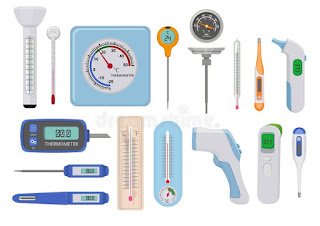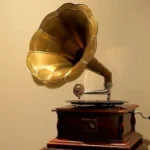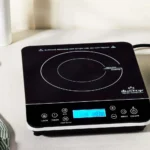
Thermometer is a tool that can be used to measure the temperature of a living and non living object. The first known attempt to measure temperature was made in 170 AD by a Greek doctor and scientist. Named Galen. It wasn’t until the 16th century, when inventors like Galileo Galilei began working on the thermoscope, that instruments for measuring temperature were developed. In 1612, Santorio Santorio placed a scale on a thermoscope to measure human temperature. In 1654, Grand Duke of Tuscany Ferdinand II found a thermometer covered with alcohol in it. The first modern thermometer was invented in 1714 by Daniel Gabriel Fahrenheit, a German physicist who also discovered the Fahrenheit scale a decade later.
The invention of thermometer has proven to be one of the best events ever as it helped mankind observe elements and perform experiments more accurately. It also revolutionised medical science forever.
The invention of the thermometer is generally credited to the Italian mathematician-physicist Galileo Galilei.
It is said that he kept the process of making thermometers a secret for 18 years. Daniel Fahrenheit’s first thermometers’ auction price was USD 107,802 at Christie’s in London in 2012.
A thermometer measures how cold or hot something is.
The first lowest temperature for a thermometer was created by placing it in a mixture of ice, water and ammonium chloride.
The simplest thermometers are glass tubes that contain a liquid, usually mercury or alcohol, which expands with hat or contracts with cold. As the liquid responds to the heat or cold it moves up or down the tube and the temperature can be read from the scale.
Medical thermometers use the Fahrenheit scale. Normal human body temperature is considered to be 98.6 degree Fahrenheit, also known as ‘blood heat’.
Many thermometers have both Celsius and Fahrenheit scales for reading the temperature.
Water boils at 212 degree Fahrenheit and freezes at 32 degree Fahrenheit.
There are a variety of medical thermometers that can be used depending on the patient, including oral thermometers, rectal thermometers, tympanic thermometers, and band thermometers.
There are three popular scales of temperature measurement — Fahrenheit, Celsius and Kelvin. The Fahrenheit unit is five-ninth of the same unit on the other two scales.
Band thermometers are often used on small children. The band thermometer is placed on a patient’s forehead and it reads their temperature.
The Fahrenheit and Celsius converge at minus 40 degree. This means that 40 degree Fahrenheit and 40 degree Celsius show the same temperature.
There are a variety of thermometers for different uses including mercury-in-glass thermometers, alcohol-in-glass thermometers, clinical thermometers, digital thermometers, rotary thermometers, resistance thermometers, thermistor thermometers, liquid crystal thermometers, and infra-red thermometers.
The Fahrenheit scale is mostly used in the United States, Cayman Islands, Bahamas, Belize and Palau. Other parts of the world prefer the Celsius scale.
Thermometers are used for a variety of purposes including for determining weather, for medical and scientific purposes, industrial and engineering uses, flight purposes, measuring water temperatures, and to help regulate and avoid disasters such as nuclear meltdowns.
Some scientists believe that a change in Fahrenheit unit is what an average human body can detect.
In order for a material to be suitable for use in a thermometer that relies on pressure and volume of temperature, it must have three specific properties. It must heat and cool rapidly; it must be able to reverse heating and cooling indefinitely; it must be monotonic in heating and cooling.
The absolute zero or the lowest temperature known to man is minus 459.6 degree Fahrenheit or minus 273.1 degree Celsius.
A thermometer that does not hold its temperature when moved to a new temperature is called a non-registering thermometer.
Registering thermometers are those that hold their temperature when moved to a new temperature until reset.
To change a temperature scale from Fahrenheit to Celsius, subtract 32 from the reading, multiply it by 5, and then divide it by 9.
Thermometers must be calibrated by comparing them with a fixed point on the temperature scale or by comparing them with an already calibrated thermometer.
Daniel Fahrenheit died on September 16, 1736 at the age of 55. He worked on an earlier invention of an alcohol-based thermometer, which was invented by Danish scientist Olaus Roemer.
The three major temperature scales for use in thermometers are Fahrenheit, Celsius, and Kelvin.
The “Boyce MotoMeter” radiator cap on a 1913 Car-Nation automobile, used to measure temperature of vapor in 1910s and 1920s cars.
Thermometers are used for determining the temperature in regards to weather. A thermometer can help people decide what to wear or what to expect from the weather. If it is very cold and raining drivers can be warned about the potential for freezing rain.
Bi-metallic stem thermometers used to measure the temperature of steamed milk.
Thermometers can be used to help determine if a person is sick because it can measure whether a person has a fever. The human body is usually 98.6 so if it measures higher the individual is considered to have a fever.
An infrared thermometer is a kind of pyrometer (bolometer).
General Thermometer FAQs
1. What is a thermometer?
A thermometer is a device used to measure temperature. Temperature is a measure of how hot or cold something is, related to the average kinetic energy of the atoms or molecules within a substance. Thermometers work by detecting a change in a physical property of a substance (like volume, pressure, or electrical resistance) that corresponds to a change in temperature.
2. What are the common units of temperature measurement?
The most common units are:
- Celsius (°C): Used in most of the world. 0°C is the freezing point of water, and 100°C is the boiling point.
- Fahrenheit (°F): Used primarily in the United States. 32°F is the freezing point of water, and 212°F is the boiling point.
- Kelvin (K): The SI base unit of temperature. It’s an absolute temperature scale, meaning 0 K is absolute zero (the lowest possible temperature). Kelvin and Celsius scales have the same size degree, so a change of 1°C is equal to a change of 1 K. To convert from Celsius to Kelvin, add 273.15.
3. How do thermometers work?
Different thermometers use different principles:
- Liquid-in-glass thermometers (mercury or alcohol): The liquid expands or contracts as temperature changes, and this movement is shown on a scale. Mercury thermometers are now largely phased out due to mercury’s toxicity.
- Bimetallic strip thermometers: Two different metals bonded together expand at different rates when heated. This bending is used to indicate temperature. Often found in ovens and older thermostats.
- Thermocouples: These use the thermoelectric effect. When two different metals are joined, a voltage is produced that varies with temperature. Used in industrial applications and for high-temperature measurements.
- Resistance thermometers (RTDs): The electrical resistance of a metal changes with temperature. These are very accurate and used in many scientific and industrial applications.
- Infrared thermometers (non-contact): These measure the infrared radiation emitted by an object, which is related to its temperature. They are useful for measuring temperatures remotely, without touching the object.
- Digital thermometers (electronic): These use electronic sensors (like thermistors or thermocouples) to measure temperature and display the reading digitally.
4. What are the different types of thermometers?
- Clinical thermometers: Used to measure body temperature (oral, rectal, axillary, or temporal).
- Forehead thermometers: Measure temperature by scanning the forehead.
- Ear thermometers (tympanic): Measure the temperature inside the ear canal.
- Room thermometers: Measure the ambient air temperature.
- Food thermometers: Used to ensure food is cooked to a safe temperature.
- Industrial thermometers: Used in manufacturing and other industrial processes, often for extreme temperatures.
- Refrigerator/freezer thermometers: Help monitor the temperature inside these appliances.
- Oven thermometers: Ensure accurate oven temperatures for cooking.
5. How do you choose the right thermometer?
The best thermometer depends on what you need to measure:
- Body temperature: A digital oral, temporal, or tympanic thermometer is usually best.
- Food temperature: A digital food thermometer with a probe is essential for food safety.
- Room temperature: A simple liquid-in-glass or digital room thermometer will work.
- Oven temperature: An oven-safe thermometer is necessary.
- Industrial temperature: The type depends on the specific application and temperature range.
6. How do you use a thermometer correctly?
Instructions vary depending on the type of thermometer. Always read the manufacturer’s instructions carefully. For clinical thermometers, proper placement is crucial for accurate readings. For food thermometers, make sure the probe is inserted into the thickest part of the food.
7. How do you calibrate a thermometer?
Some thermometers, particularly those used in critical applications, may need calibration. This often involves checking the reading against a known standard (like an ice bath for 0°C) and adjusting the thermometer if necessary. Digital thermometers may have a calibration function.
8. What is a normal body temperature?
The average normal body temperature is around 98.6°F (37°C), but it can vary slightly from person to person and throughout the day. Temperatures above 100.4°F (38°C) are generally considered a fever.
9. How do I take my temperature with a thermometer?
Again, this depends on the type of thermometer. Oral thermometers are placed under the tongue. Rectal thermometers are inserted gently into the rectum. Axillary thermometers are placed under the armpit. Temporal thermometers are scanned across the forehead. Tympanic thermometers are placed in the ear.
10. Where can I buy a thermometer?
Thermometers are widely available at pharmacies, drugstores, supermarkets, and online retailers.









